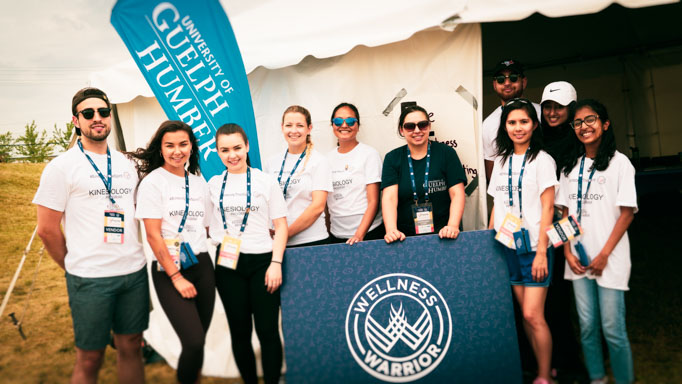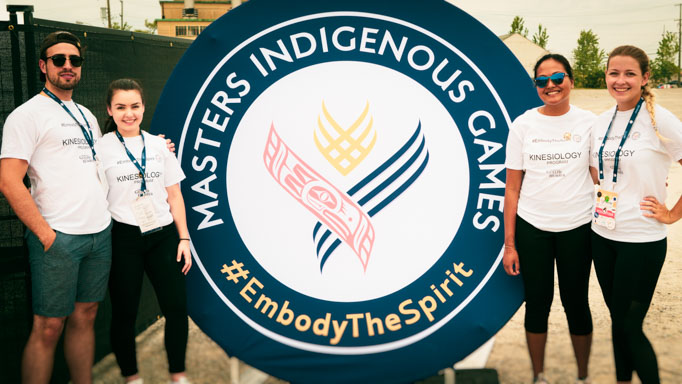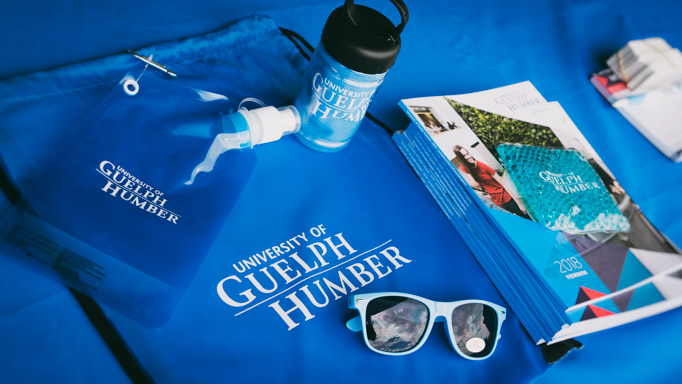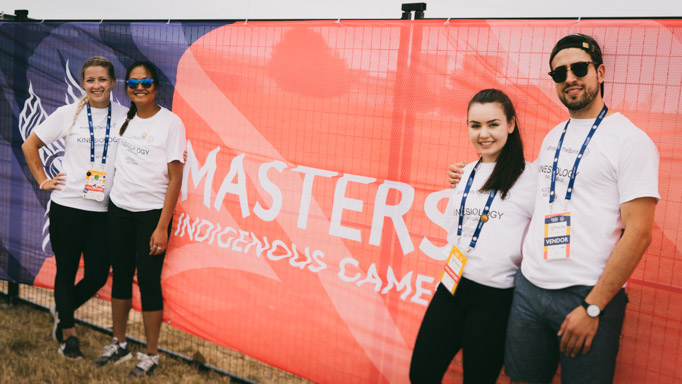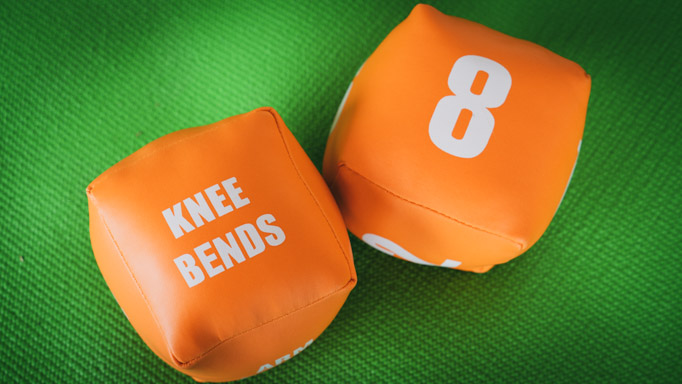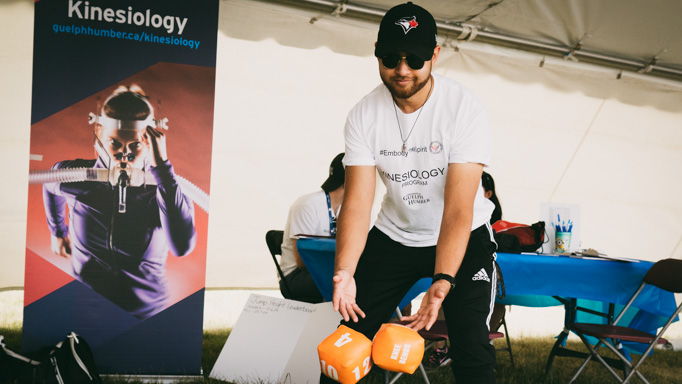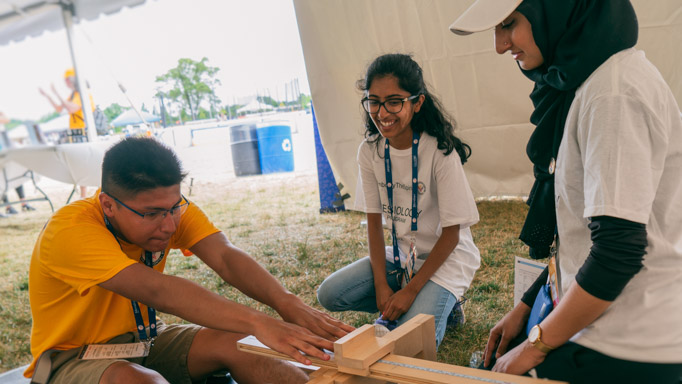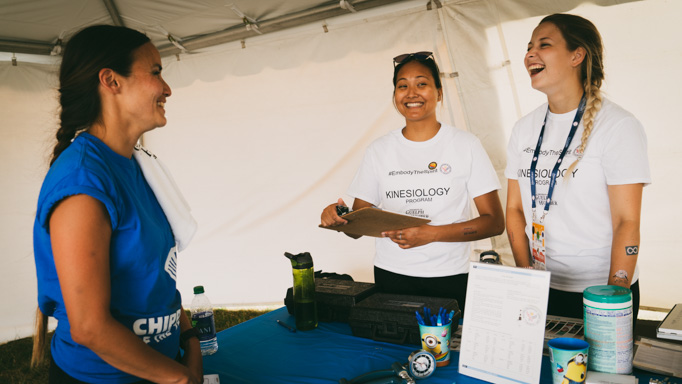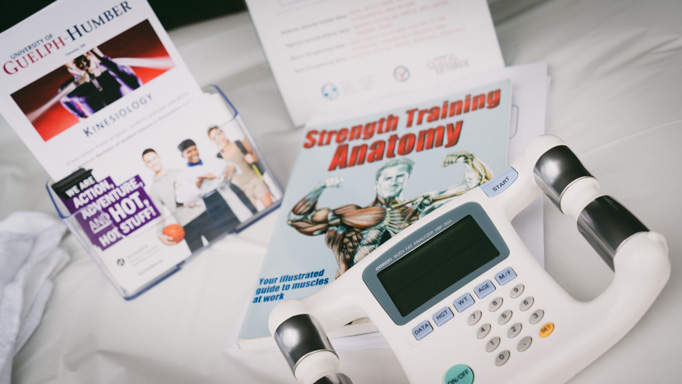- Future Students
- Current Students
- Faculty
- Staff
- Alumni
- Others
UofGH Kinesiology students volunteer at the 2018 Masters Indigenous Games
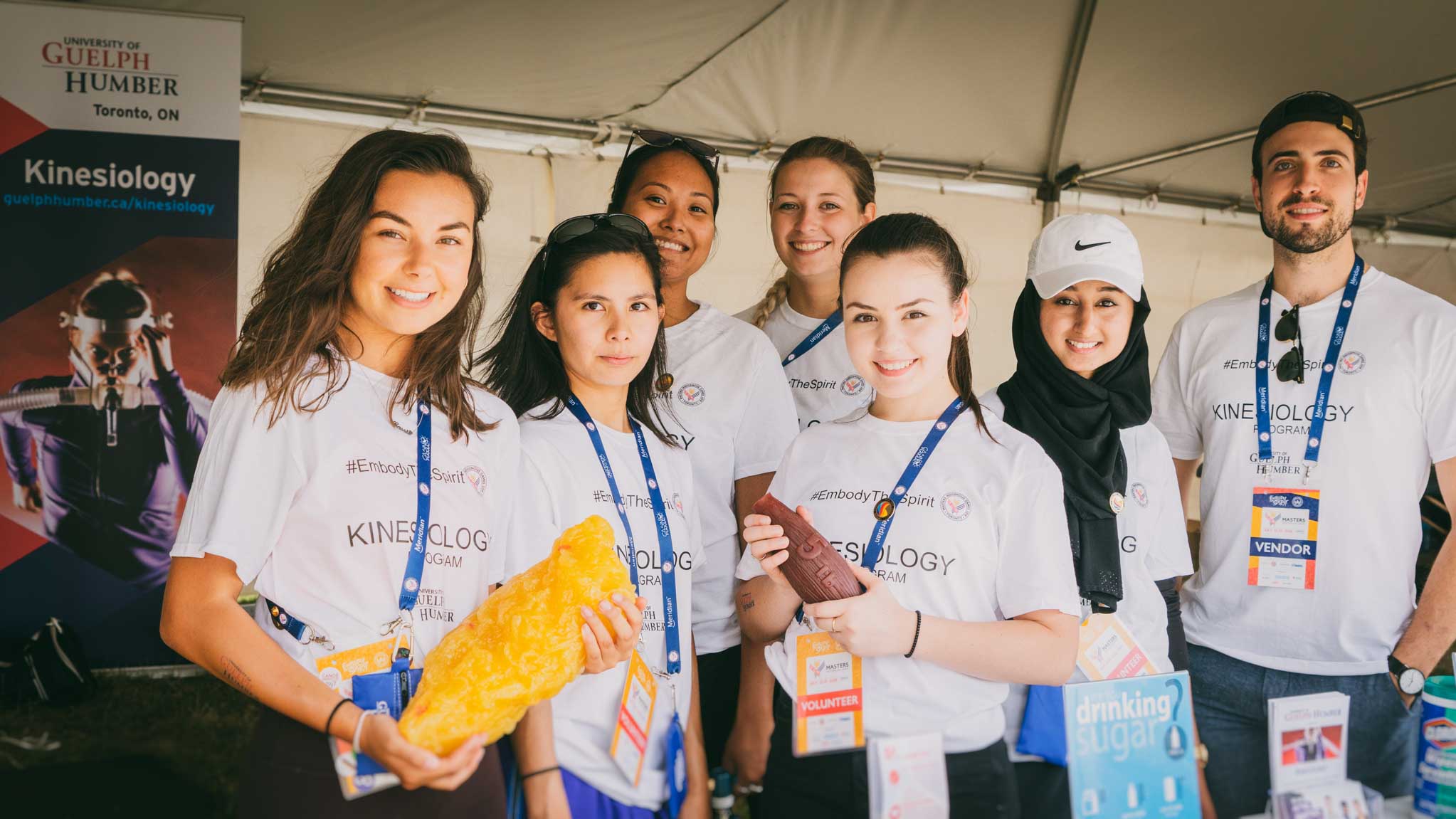
Students in the Kinesiology program at the University of Guelph-Humber recently spent a weekend volunteering at the 2018 Masters Indigenous Games (MIG), where they offered fitness assessments, and provided advice and health information to MIG athletes and event attendees alike.
The MIG event, hosted by Aboriginal Sport & Wellness Council of Ontario (ASWCO), provided Indigenous adults with the opportunity to compete in a variety of contemporary and traditional sporting activities alongside hundreds of athletes from across North America and beyond. Held at Downsview Park in Toronto, the MIG presented an opportunity for everyone to celebrate Indigenous culture and wellness (view opening video here).
Collaborating with ASWCO, UofGH opened its doors to host three days of volunteer training and Indigenous cultural safety training for 300 MIG volunteers in preparations ahead of the games, which were also attended by UofGH students. In fact, students also had the opportunity to attend a medicine wheel workshop on campus, led by Kim Wheatley, Anishinaabe Cultural Consultant and Senior Manager of 2018 MIG, earlier in the semester as part of preparation for the event.
UofGH students volunteered enthusiastically to be a part of the event.
“The theme of our Kinesiology booth was to ‘Embody-the-Spirit’ of a Wellness Warrior. A ‘Wellness Warrior’ embodies the spirit of core Indigenous values of bravery, respect, generosity, responsibility, humility, compassion, leadership, peacemaking, and spirituality,” said Dr. Agnes Coutinho, Assistant Program Head of Kinesiology.
“The message that we wanted to convey to those who come to our booth is that anyone can be a Wellness Warrior as long as they ’embody the spirit’ and strive for wellness and balance, for themselves and for others.”
Promoting fitness
Inside UofGH’s Wellness Warrior booth, students offered a range of informative and interactive services relating to fitness, health and wellness.
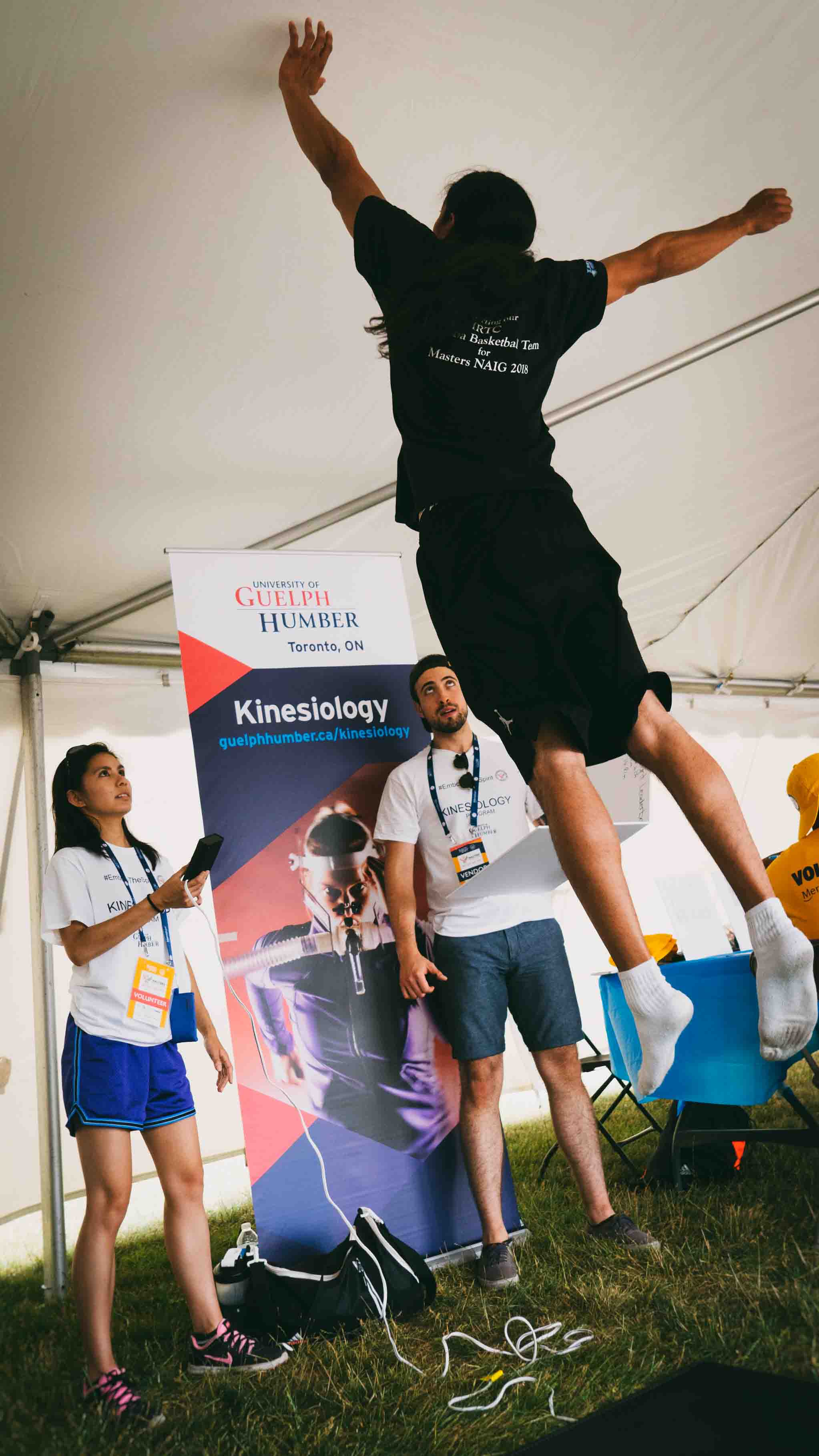
Many visitors enjoyed trying their hand at a station measuring hand-grip strength, with some athletes even engaging in some friendly competition to try to top one another. At another station, UofGH students measured leg power though vertical jump, with one of the MIG basketball competitors managing to leap up and tap the tent’s ceiling. In addition, physical models comparing the appearance of five pounds of fat tissue to five pounds of lean muscle provoked curiosity and discussion.
“People were really intrigued by that,” observed volunteer Sajan Patel, a recent Kinesiology graduate who also said that offering body mass index measurements led to productive conversations with attendees.
“It’s interesting for people to get a sense of where the general range is for a healthy individual and then get a sense of whether they need to make a change to get in that range. If so, we were able to discuss with them some of the changes they could make.”
In fact, discussions like those were part of the inspiration for many students to volunteer.
“I’m really passionate about fitness, health and wellness,” said Cassandra Holinaty, who is going into her third year of study. “That’s my passion, and that’s why I’m in Kinesiology.”
“Our students were also involved in conducting a survey on barriers to physical activity during MIG,” said Dr. Coutinho, also a Board Director and past Chairperson for the National Aboriginal Diabetes Association. “Collecting information on what members of Indigenous communities perceive as barriers to physical activity is really important to us, we need to capture that information in order to directly address it. This information that will be used to help ASWCO in future program delivery.”
A cultural event
The Masters Indigenous Games are not simply about athletics – the event is also a valuable platform to promote and celebrate Indigenous culture and peoples.
Positioned next to the Cultural Village, which offered workshops, storytelling and interactive performances, along with daily demonstrations of traditional games, the Wellness Warrior tent was home to UofGH’s fitness testing team throughout the event. Nearby, vendors offered authentic moccasins, clothing, beadwork, bone work, leatherwork, artwork and stonework, along with nutritious Indigenous foods. The Games came to a close with the Embody the Spirit Powwow, which featured a smoke dance special, traditional Haudenosaunee singers and a community feast.
Those cultural experiences were also an important part of why UofGH’s student volunteers decided to get involved, and each student had the opportunity to explore various cultural displays and activities, as well as take part in some of the demonstrations, throughout the weekend.
“We always talk about wanting to learn more about Indigenous culture and people. Here’s a situation where I’m in my comfort zone because we’re dealing with fitness testing, but I can still stretch that comfort zone by working with a population I haven’t had the chance to work with before,” Patel said.
“I just thought it was a great opportunity."


